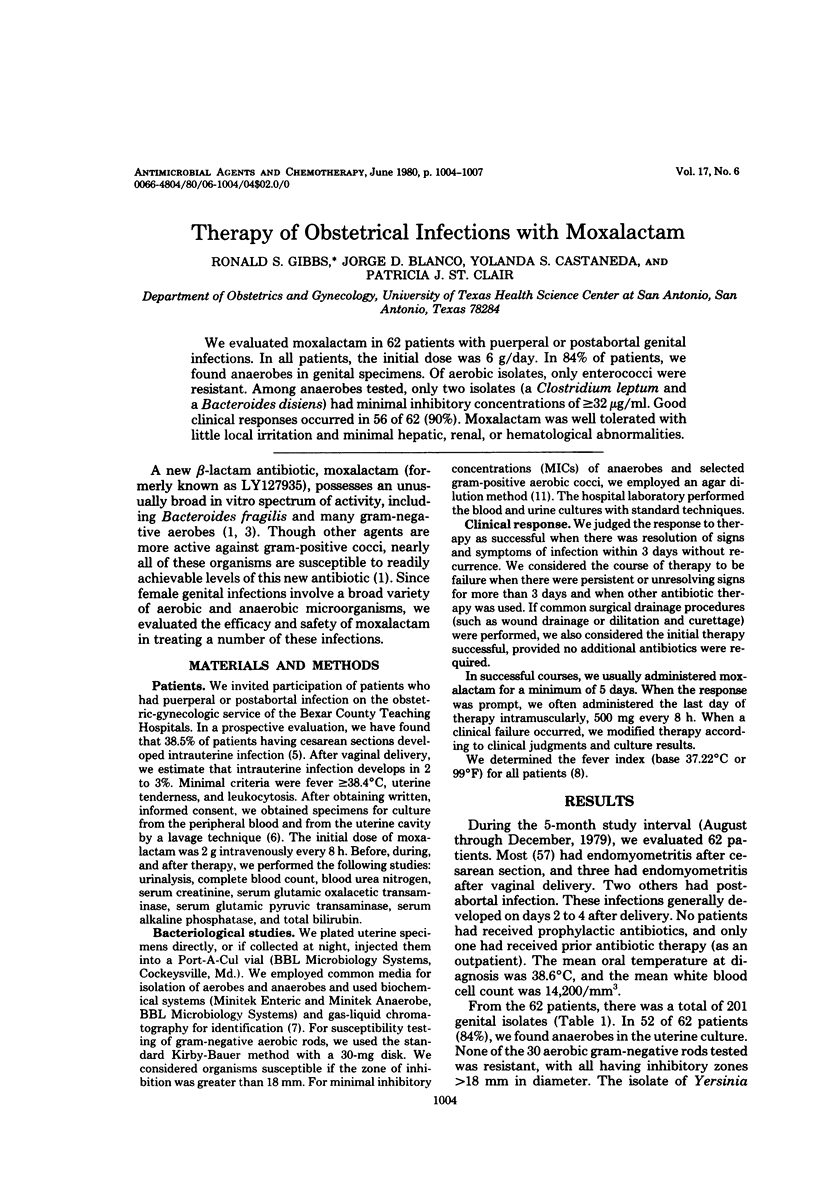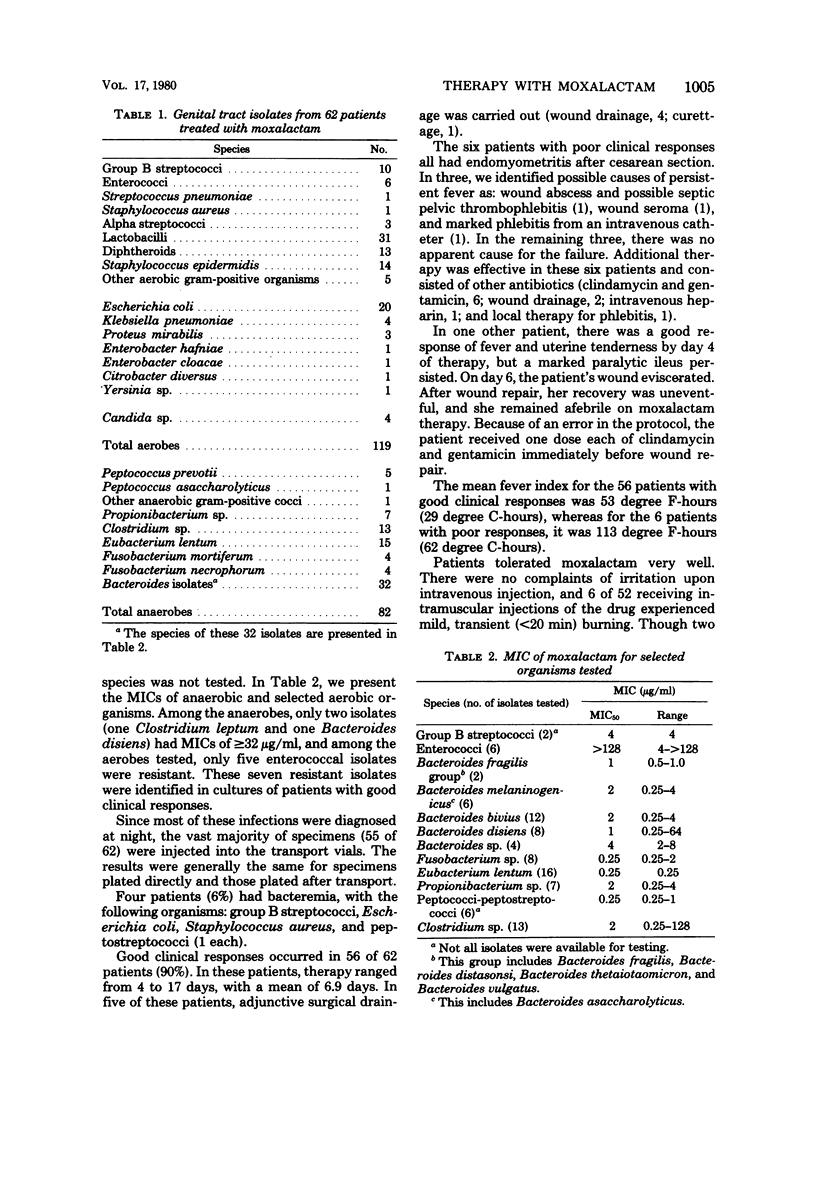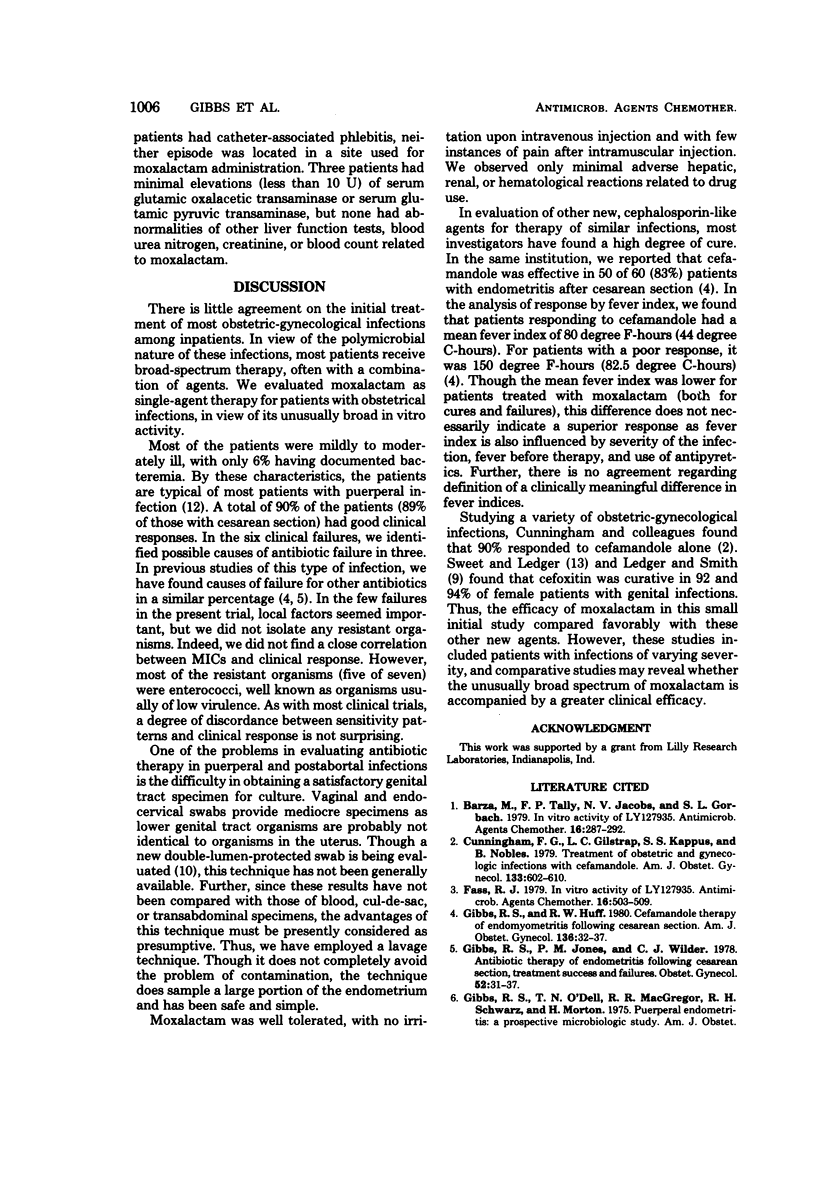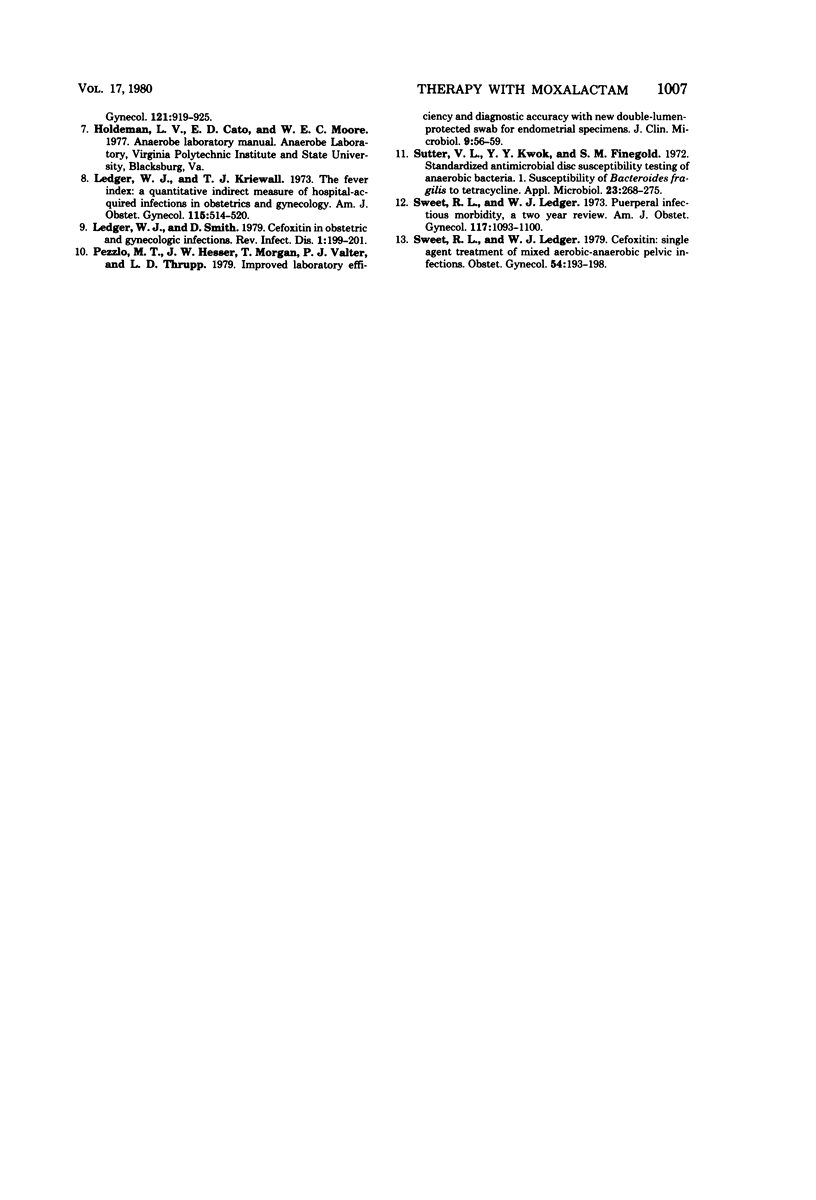Abstract
We evaluated moxalactam in 62 patients with puerperal or postabortal genital infections. In all patients, the initial dose was 6 g/day. In 84% of patients, we found anaerobes in genital specimens. Of aerobic isolates, only enterococci were resistant. Among anaerobes tested, only two isolates (a Clostridium leptum and a Bacteroides disiens) had minimal inhibitory concentrations of greater than or equal to microgram/ml. Good clinical responses occurred in 56 of 62 (90%). Moxalactam was well tolerated with little local irritation and minimal hepatic, renal, or hematological abnormalities.
Full text
PDF



Selected References
These references are in PubMed. This may not be the complete list of references from this article.
- Barza M., Tally F. P., Jacobus N. V., Gorbach S. L. In vitro activity of LY127935. Antimicrob Agents Chemother. 1979 Sep;16(3):287–292. doi: 10.1128/aac.16.3.287. [DOI] [PMC free article] [PubMed] [Google Scholar]
- Cunningham F. G., Gilstrap L. C., 3rd, Kappus S. S. Treatment of obstetric and gynecologic infections with cefamandole. Am J Obstet Gynecol. 1979 Mar 15;133(6):602–610. doi: 10.1016/0002-9378(79)90005-x. [DOI] [PubMed] [Google Scholar]
- Fass R. J. In vitro activity of LY127935. Antimicrob Agents Chemother. 1979 Oct;16(4):503–509. doi: 10.1128/aac.16.4.503. [DOI] [PMC free article] [PubMed] [Google Scholar]
- Gibbs R. S., Huff R. W. Cefamandole therapy of endomyometritis following cesarean section. Am J Obstet Gynecol. 1980 Jan 1;136(1):32–37. doi: 10.1016/0002-9378(80)90560-8. [DOI] [PubMed] [Google Scholar]
- Gibbs R. S., Jones P. M., Wilder C. J. Antibiotic therapy of endometritis following cesarean section. Treatment successes and failures. Obstet Gynecol. 1978 Jul;52(1):31–37. [PubMed] [Google Scholar]
- Ledger W. J., Kriewall T. J. The fever index: a quantitative indirect measure of hospital-acquired infections in obstetrics and gynecology. Am J Obstet Gynecol. 1973 Feb 15;115(4):514–520. doi: 10.1016/0002-9378(73)90399-2. [DOI] [PubMed] [Google Scholar]
- Ledger W. J., Smith D. Cefoxitin in obstetric and gynecologic infections. Rev Infect Dis. 1979 Jan-Feb;1(1):199–201. doi: 10.1093/clinids/1.1.199. [DOI] [PubMed] [Google Scholar]
- Pezzlo M. T., Hesser J. W., Morgan T., Valter P. J., Thrupp L. D. Improved laboratory efficiency and diagnostic accuracy with new double-lumen-protected swab for for endometrial specimens. J Clin Microbiol. 1979 Jan;9(1):56–59. doi: 10.1128/jcm.9.1.56-59.1979. [DOI] [PMC free article] [PubMed] [Google Scholar]
- Sutter V. L., Kwok Y. Y., Finegold S. M. Standardized antimicrobial disc susceptibility testing of anaerobic bacteria. I. Susceptibility of Bacteroides fragilis to tetracycline. Appl Microbiol. 1972 Feb;23(2):268–275. doi: 10.1128/am.23.2.268-275.1972. [DOI] [PMC free article] [PubMed] [Google Scholar]
- Sweet R. L., Ledger W. J. Cefoxitin: single-agent treatment of mixed aerobic-anaerobic pelvic infections. Obstet Gynecol. 1979 Aug;54(2):193–198. [PubMed] [Google Scholar]
- Sweet R. L., Ledger W. J. Puerperal infectious morbidity: a two-year review. Am J Obstet Gynecol. 1973 Dec 15;117(8):1093–1100. doi: 10.1016/0002-9378(73)90759-x. [DOI] [PubMed] [Google Scholar]


